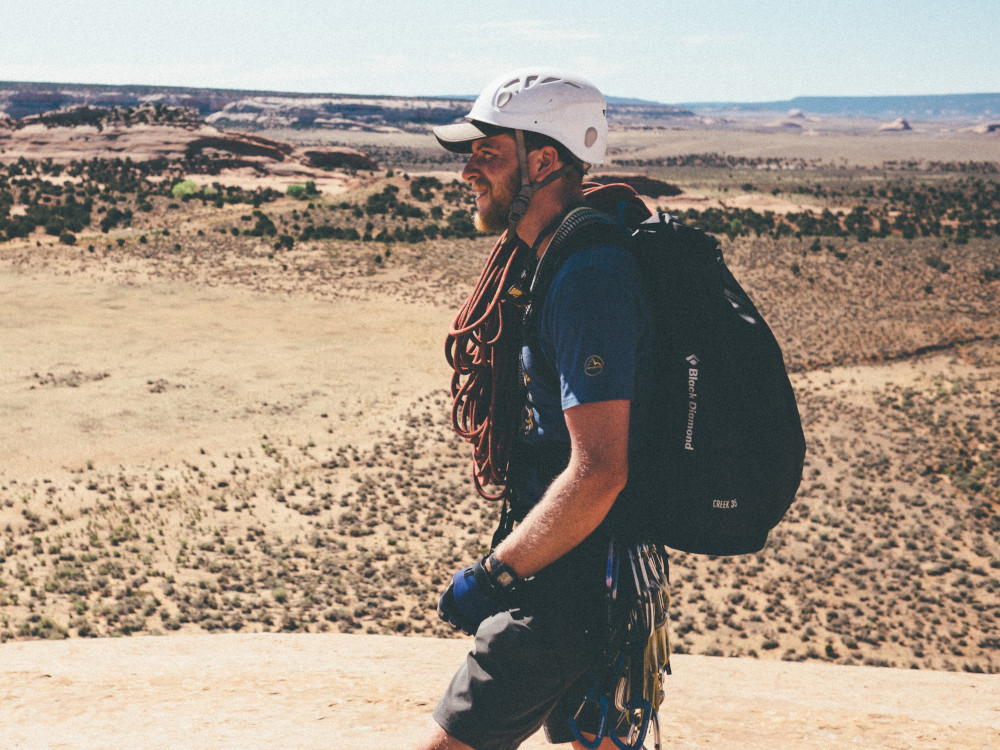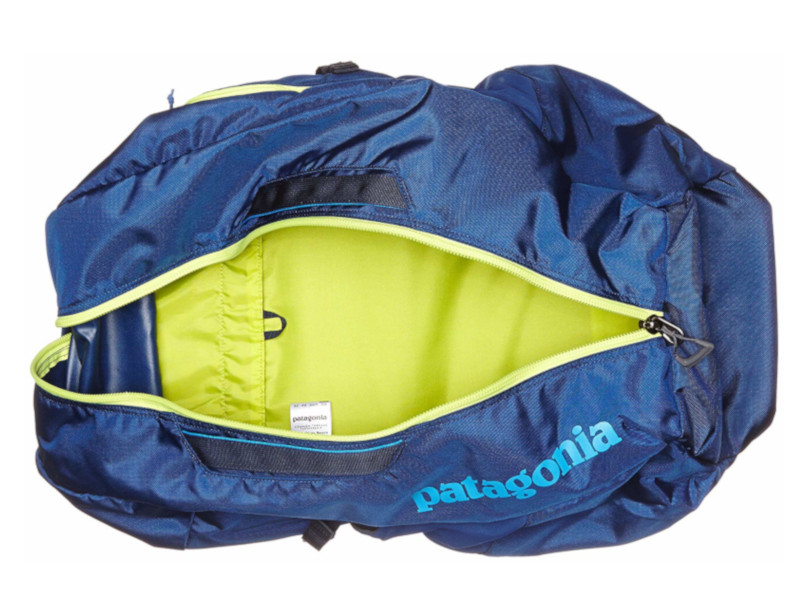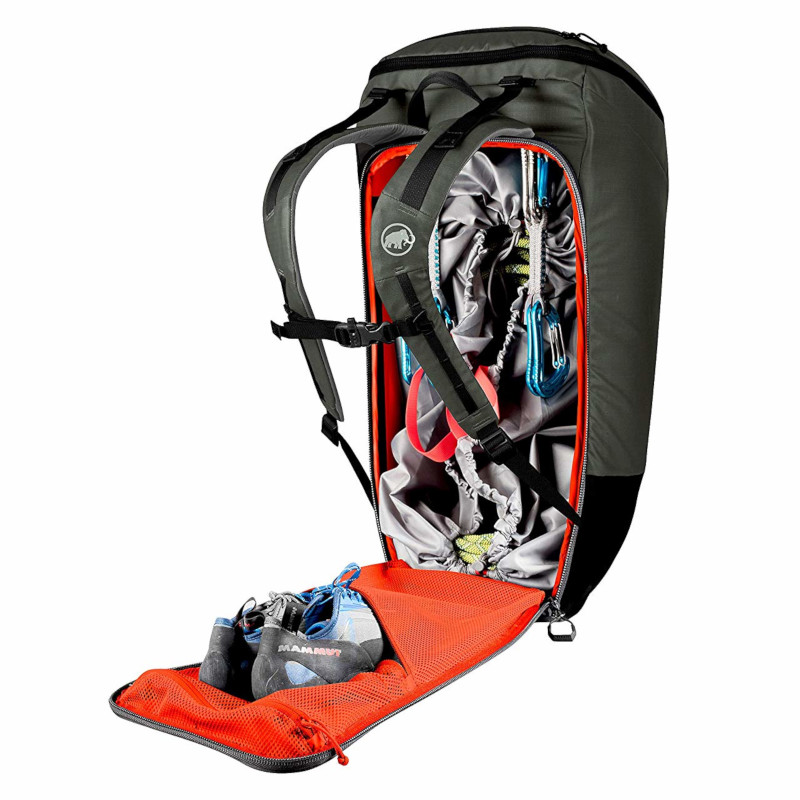Climbing backpacks: buying guide & comparison

There are many sports brands that launch their products on the market every year. backpacks for different disciplines climbing. Finding the ideal backpack is not easy and even less so depending on the type of activity we are going to do.
In this article you will find a buying guide and comparison of the best climbing backpacks on the market. The various recommendations are the result of an analysis of the climbing discipline as well as the personal experience of numerous climbers.
The best climbing backpacks by category
We will explain later on how to choose the size of your backpack and the necessary adjustment that it should have with respect to the athlete's body. Now, you need to know the best range of climbing backpacks currently available on the market. First of all, you should know that climbing backpacks are generally divided into three main categories:
- Sport climbing backpacks
- Alpine or classic climbing backpacks
- Transport bags
Patagonia Rucksack Crag Daddy".

The rucksack Patagonia Crag Daddy 45L is a real workhorse of a backpack for those days when you have to carry a lot of gear. The Crag Daddy backpack has plenty of room to fit a full double rack, climbing shoes, harness, rope, food, water and also a guide. It consists of a full-length front zip and allows for easy loading and unloading.
With breathable mesh shoulder straps and back panel, padded hip belt, shoulder load lifters and reinforced handles, this backpack not only makes carrying climbing gear to the rock easier, but will accompany you season after season.
Trango Crag Pack".

The rucksack Trango Crag Pack is a sturdy top and vertical loading backpack, which also has side access. Trango uses the fabric Titan Wrap to ensure that the backpack remains upright regardless of whether it is empty or full. It has a 48L capacity in the main compartment. Other features include: external mesh shoe pocket, side pocket, built-in rope tarpaulin and two side straps for bulky jackets or other equipment.
Mammut Neon Gear 45

The rucksack Mammut Neon Gear 45 is a great backpack for climbers who want easy access. Although this is technically a top-loading backpack, its ease of access comes from the rear access panel. This opens to an internal mesh pocket for storing climbing shoes, as well as including a stowable rope tarp, a separate magnesium pouch and an internal strap for hanging as much as needed.
How to size your backpack correctly?
The first question climbers are faced with when considering buying a backpack for the sport is the size and capacity it must have. We must consider the whole material we will carry to our route: accessories, safety devices, rope, hydration or food.
However, the key to finding the best backpack for a climber is not so much the capacity of the materials it can hold, but rather that, when sizing a climbing backpack, the most important thing to take into account is the length of the climber's torso. If it is not a backpack that fits the climber's body, it will not be comfortable and will not allow him to develop the technique correctly and, therefore, it will be unusable.
This is the first aspect to look at when buying a climbing backpack. Most of the other aspects correspond to the different characteristics of the backpacks and you will choose one model or another according to these, the one that can best meet a particular need. However, the torso length correlates with the internal frame size in most climbing packs and is generally the least adjustable aspect of any backpack.
Determining the correct frame size
The correct way to size a backpack according to your torso length is to measure the distance from the top of the hips to the top of the shoulder blades. This is how any shop would fit a backpack in general. Because most of them tend to fall within a sizing structure that is categorised according to the famous sizes S, M and Lwhere each size refers to a specific torso length according to the general average.
To choose your size, simply try the backpack on with a little weight in it and make sure the size is right for you. lap belt is right at the top. Your iliac crest, so called hip bone, and the bottom of the backpack should rest on your lower back. You will find your size S, M or L this way. Once you have determined your size, you will need to tighten the straps until they fit snugly against your body.
Adjusting the shoulder straps
After completing the previous step you should also adjust the backpack straps on your shoulders. It will help you to position the load in an ideal place and, as mentioned above, you should feel that the backpack is in the right place. most of the load is borne by your hips.
In this regard, it should be noted that a common misconception is that the load in a backpack should be supported by the shoulders. However, if the climber's shoulders carry a heavy load, they will face injury and fatigue more quickly.
Choosing the right capacity
The last step before you finish adjusting and sizing your backpack to your body and torso length is to choose the right capacity for it. The disadvantages of having a backpack that is too small, obviously, is that you can't carry as much gear with you, but by the same token a bulky, overloaded backpack isn't the solution either.
Climbing backpacks / Cover photo: Mar Bocatcat (Unsplash)
Fastpacking is not about going faster. It's about going lighter.
If you come from classic trekking, this is the next step: learning to move with less weight,
more fluid and enjoying every kilometre more.
Join the channel and start discovering what lightness feels like.
